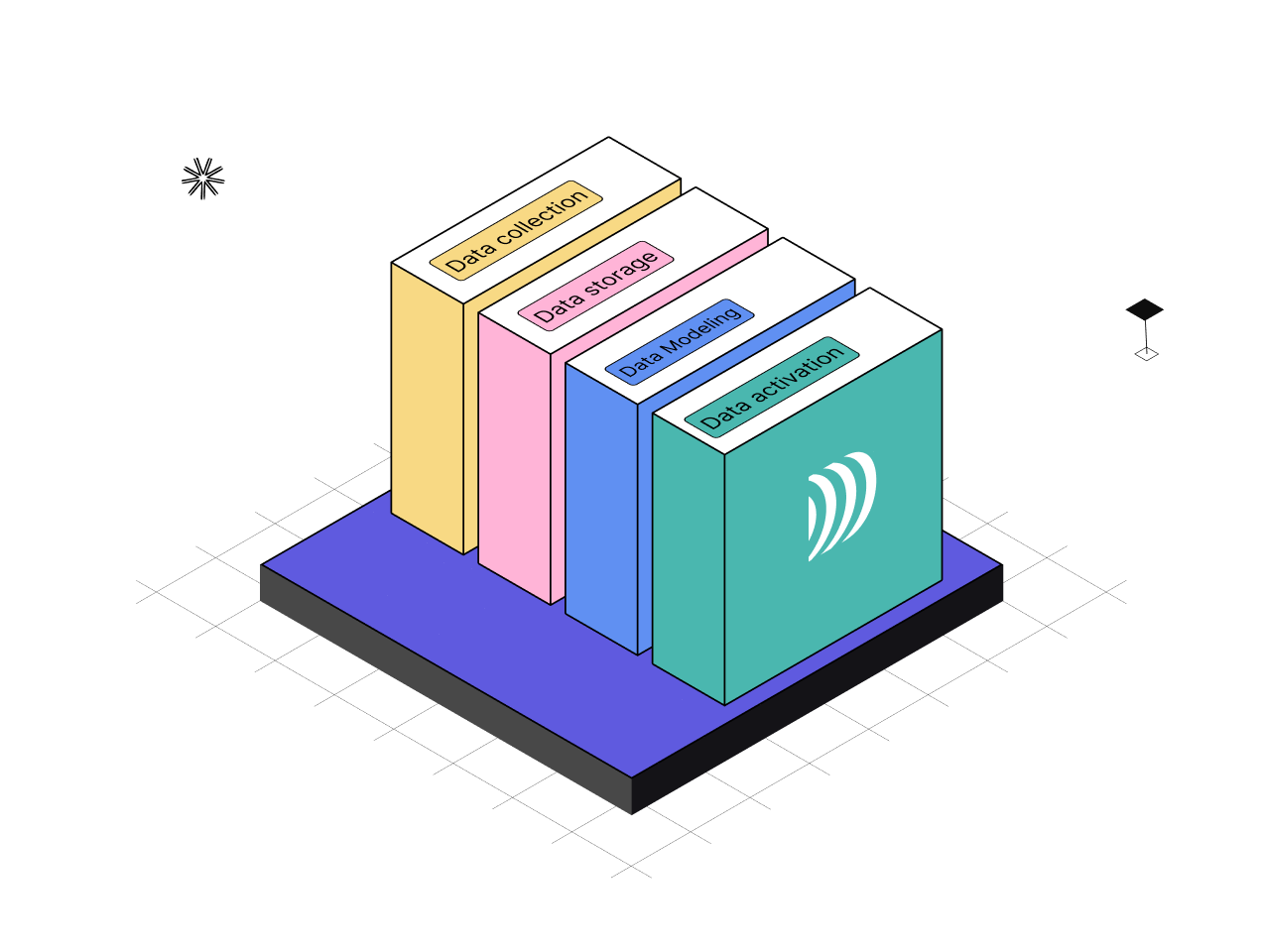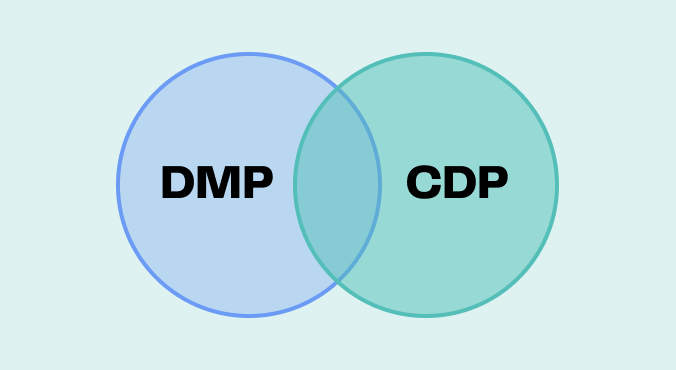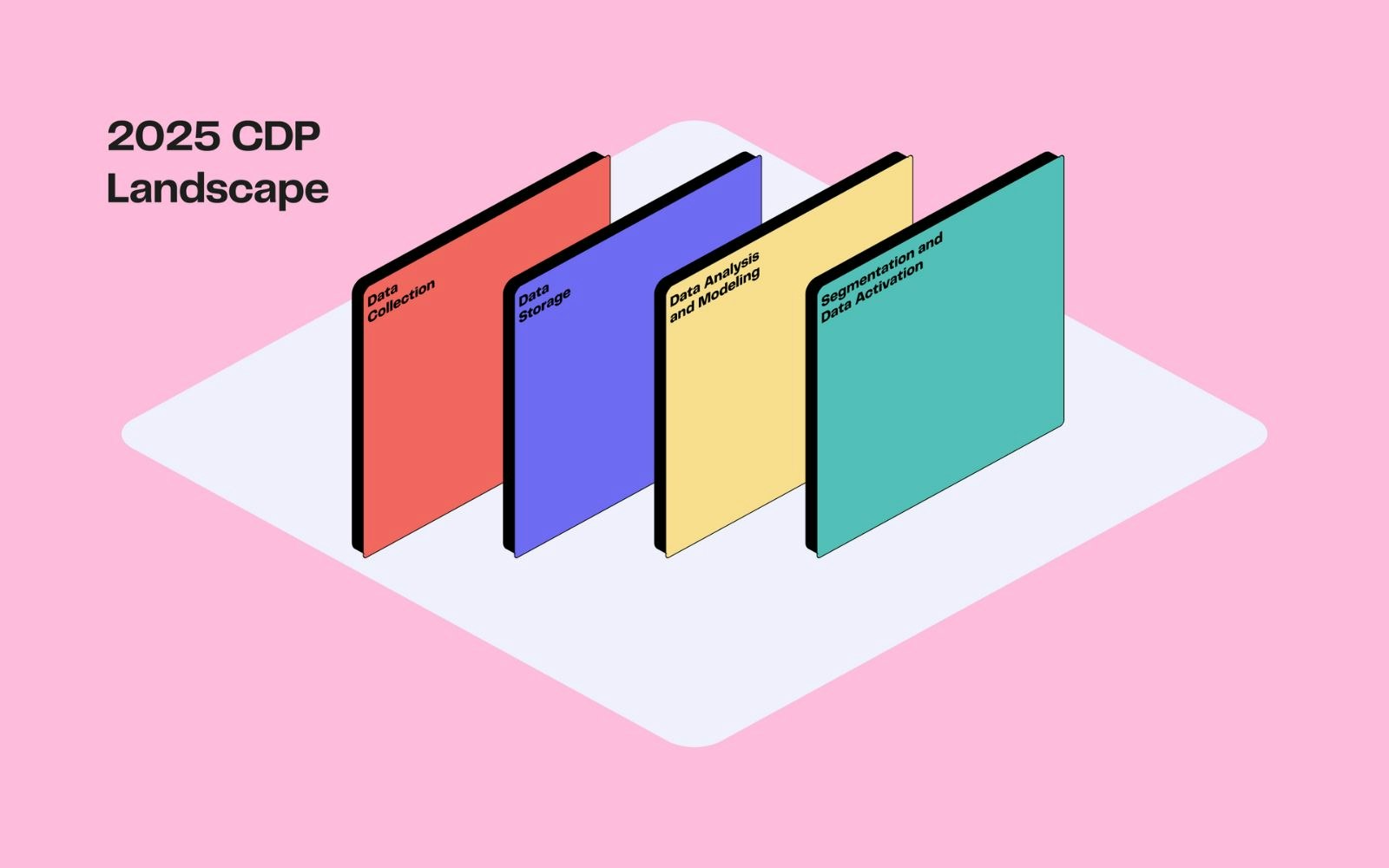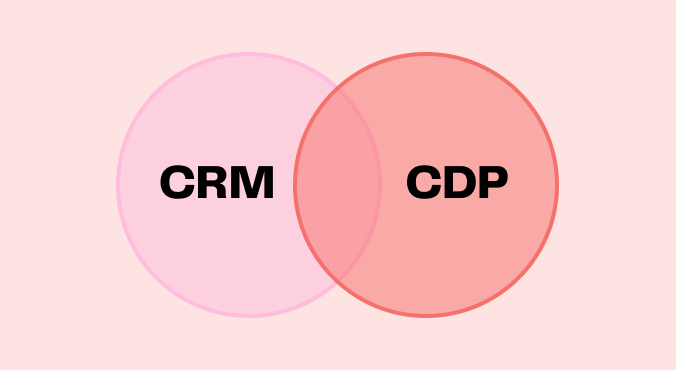
Main differences between CDP and CRM
5min • Last updated on Feb 6, 2025

Alexandra Augusti
Chief of Staff
Customer data is the central pillar of any effective marketing approach. It plays a crucial role in gaining an in-depth understanding of prospects and customers, personalizing offers and communications, and optimizing campaigns. But, how can these data be collected, stored, analyzed, and effectively utilized?
The market offers several options, but two stand out: CRM (Customer Relationship Management) and CDP (Customer Data Platform). These data management platforms share similarities but also have significant differences.
This article aims to summarize the similarities and, more importantly, the differences between CRM and CDP.
The fundamentals of CRM and CDP
Before diving into the comparison between CRM and CDP, let's provide simple definitions of these tools.
What is CRM?
CRM, or Customer Relationship Management, is a software designed to optimize interactions with clients and prospects at every stage of their relationship with the company. This system centralizes various information, such as:
Details of client communications and touch points with the company, including date and time.
Reports on exchanges and next steps noted by sales teams.
Its main advantages include:
Compiling and tracking essential details about contacts, sales opportunities, quotes, and agreements.
Efficiently automating tasks related to sales, marketing, and customer support, including data entry automation, email campaigns, and calendar management.
Measuring and analyzing key performance indicators, such as conversion rate, revenue, customer satisfaction, for an optimized business strategy.
Using a CRM significantly enhances the quality of business relationships. This system is particularly useful for sales, marketing, and customer service teams.
What is a CDP (Customer Data Platform)?
A CDP, or Customer Data Platform, is a platform that aggregates, cleans, and harmonizes customer data from various sources (including CRM) into a unified database, creating detailed customer profiles. It transforms raw information into a coherent and comprehensive picture of your audience, visible across different channels. These structured and refined data are then made available to various teams that may need it (the same ones: sales, marketing, support, etc.)
CDPs are crucial for data collection, unification, and activation within a company.
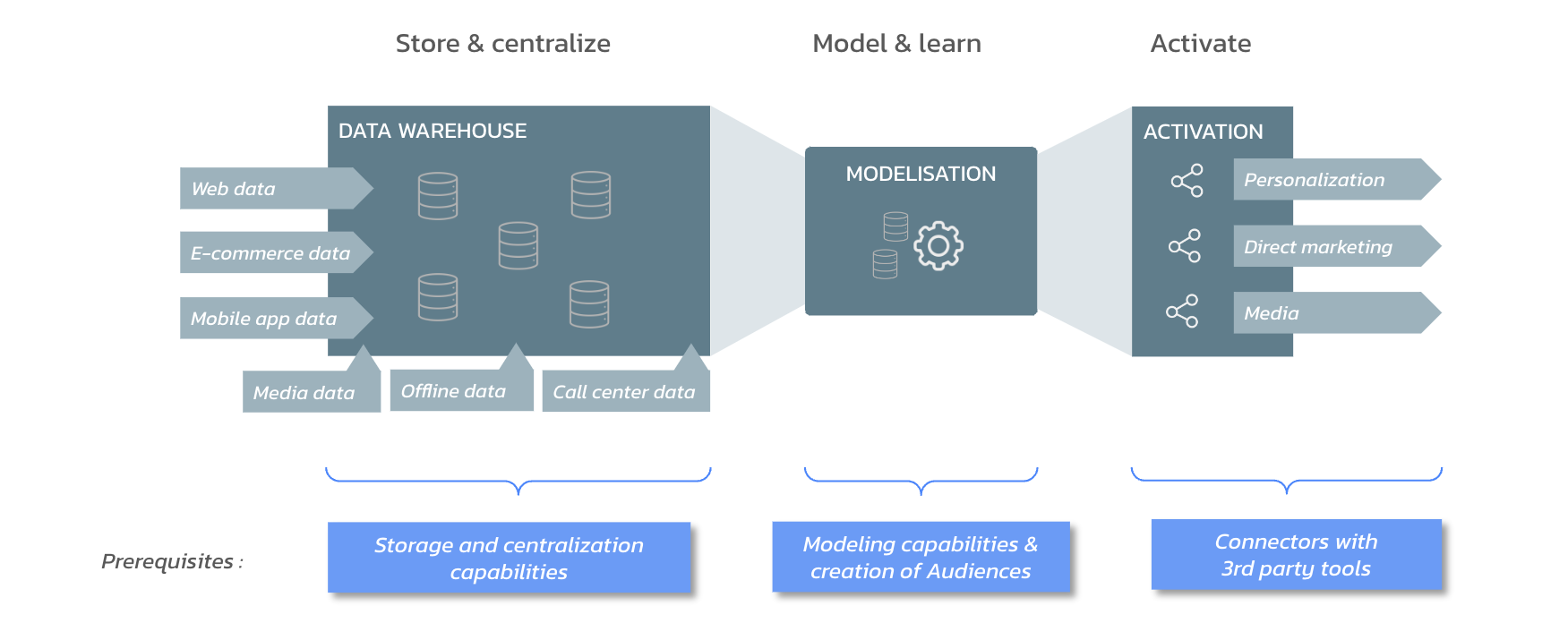
Schematic diagram of a CDP
Types of managed data
The distinction between a CRM and a CDP manifests itself notably in the types of data processed by each and their management mode.
Operational data and actions in CRM
The CRM focuses on the management of operational data, i.e., information related to customer and prospect interactions, transactions, and activities with the company. These structured and clearly identified data allow for tracking the customer's journey from the initial contact to their loyalty. Here are a few examples of data managed by a CRM:
Contact information (name, first name, email, phone, etc.)
Sales opportunities (pipeline stage, value, expected closing date, etc.)
Quotes and contracts (number, amount, duration, etc.)
Interactions with clients (calls, emails, appointments, etc.)
Customer service tickets (number, subject, status, etc.)
However, these operational data, while essential for managing the customer relationship, do not provide a complete understanding of customer behaviors, needs, and preferences. They tend to be restricted to a specific channel or department and do not capture the entirety of customer interactions with the brand.
Unified and persistent data in CDP
In contrast, the CDP handles more diverse, rich, and comprehensive data that go beyond simple operational data. It collects first-party data (directly collected from customers) and third-party data (from partners or external providers).
Furthermore, the CDP handles anonymous data alongside personally identifiable information such as name, email, or phone number. Here are examples of data stored in a CDP:
Profile data (identity, contact information, demographic characteristics, etc.)
Behavioral data (browsing history, searches, purchases, etc.)
Transactional data (cart details, invoices, payments, etc.)
Offline data (in-store visits, phone calls, etc.)
Product data (catalog, stock, prices, etc.)
These data are standardized and unified to form a unique and persistent customer profile, constantly updated. This complete profile provides a 360-degree view of the customer, enabling personalization of offers, messages, and experiences based on their specific needs and expectations.

Customer 360, centralising all customer data
Integration within the technological environment
Compatibility with a company's technological environment is crucial when comparing CRM and CDP. This criterion evaluates these systems' ability to connect to other existing tools and systems, facilitating data and customer interaction management.
CRM and its interactions with sales and customer service tools
The CRM facilitates interaction with sales and customer service tools, such as quotation management, contract management, invoice management, and support ticketing programs. It also aligns with marketing tools, including email delivery solutions, landing page creation, and social media management. These integrations allow for efficient synchronization of operational data between departments and strengthen inter-team collaboration.
However, the CRM encounters limitations in integrating data from diverse and complex sources such as behavioral, transactional, offline, and product information. Linking a CRM with analysis, personalization, or recommendation tools, which require access to more detailed and comprehensive data, can be challenging.
CDP as a central data layer for all customer touch points
The CDP is designed to act as the central core of customer data, covering both online and offline, identified and anonymous, structured, and unstructured interactions. It is compatible with a wide range of tools and systems, including CRM, DMP (Data Management Platform), CMS (Content Management System), ESP (Email Service Providers), as well as analytics, personalization, and recommendation software. Through these integrations, the CDP collects, unifies, and activates customer data on a large scale, enabling the delivery of consistent and personalized experiences across all communication channels.
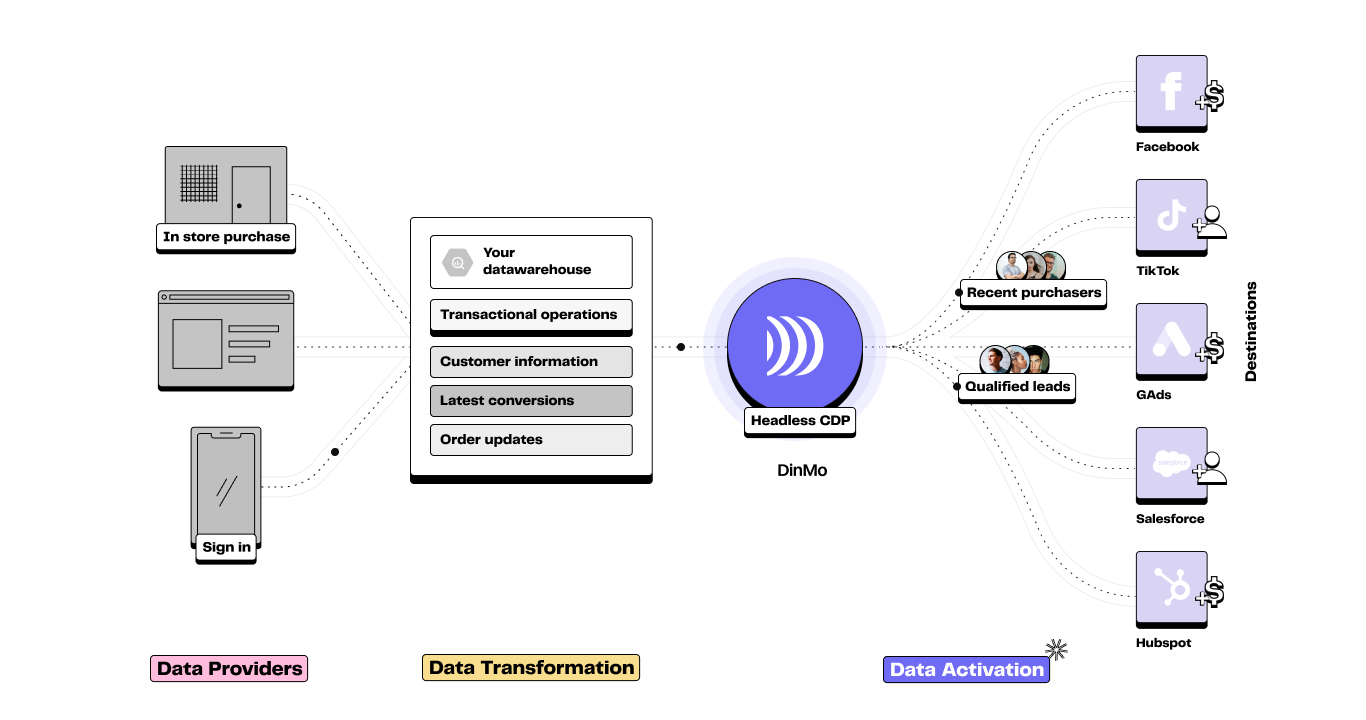
Data Activation
Accessibility and use of data
A distinctive element between CRM and CDP lies in the ease and speed of data access and updates by users.
Real-time data access and updates in CDP
The CDP stands out in its ability to provide real-time data access and updates. This ensures that customer information is always up-to-date and relevant. The CDP extracts data from multiple sources, unifies and stores them in a central database that automatically updates with the arrival of new data. As a result, customer profiles are constantly updated, reflecting their latest interactions, transactions, and behaviors.
In addition, it facilitates data access and utilization through various tools in an intuitive and user-friendly manner, without requiring in-depth technical skills. Users can easily segment their audience, personalize content, launch marketing campaigns, and more. They also have the capability to export data to other systems, such as analytics and personalization tools, to enrich customer experiences.
Limitations of historical and real-time data access in CRM
The CRM, on the other hand, has limitations regarding data access and updates, impacting the quality and relevance of customer information.
Accessing and exploiting data via a CRM demand technical knowledge, reducing its accessibility for users without specific skills in this field. Data access and utilization often require the intervention of IT professionals or data specialists, making the creation of audience segments, marketing campaigns, and other marketing actions complex and time-consuming.
Impact on marketing strategy
The integration of a CRM and a CDP distinctly influences a company's marketing strategy by significantly enhancing the customer experience and personalizing marketing campaigns.
Improving the customer experience through CRM
The CRM is a powerful tool for enhancing the customer experience by making interactions more efficient and personalized at every stage of their journey. With the CRM, it is possible to:
Precisely identify customer expectations, needs, and challenges through structured collection of operational data.
Provide tailored solutions, optimized through the automation of sales, marketing, and customer service processes.
Consolidate trust and strengthen relationships with customers and prospects through thorough monitoring and analysis of interactions.
Increase loyalty and maximize customer lifetime value by continuously improving satisfaction and the retention rate.
However, the CRM alone is not enough to generate a consistent and personalized experience across all channels and touch points since it does not consider data from other sources such as online activities, transactions, offline interactions, and product information, nor does it enable the activation of data to third-party tools.
Personalization and marketing precision through CDP
The CDP, on the other hand, excels in personalization and improving the precision of marketing campaigns. CDPs unlock many use cases. In short, it is possible to:
Gain in-depth insights into customer behavior, needs, and preferences through unified data.
Create targeted and relevant audience segments through refined data segmentation and analysis.
Adapt offers, messages, and experiences based on customers' specific needs by utilizing data across various marketing, sales, customer service, and analytic tools.
Evaluate and increase the effectiveness of marketing campaigns with real-time data and analytics reports.
Therefore, the CDP is essential for a personalized and precise marketing strategy, enabling the creation of consistent and tailored customer experiences across all channels and touchpoints, leveraging data from various categories.
Which solution for which need?
Choosing between a CRM and a CDP depends on various factors: your objectives, budget, industry, and the size of your company, among others. Despite the absence of a single answer, certain elements can guide your decision.
Note that a company can very well have both a CRM and a CDP. In fact, it is often recommended to take advantage of the benefits of both tools!
When to prioritize CRM usage
Opt for a CRM if your objective is to:
Improve the management of interactions with clients and prospects throughout their lifecycle.
Automate processes related to sales, marketing, and customer service.
Encourage inter-team and inter-department collaboration.
Analyze performance through key indicators.
The CRM is, thus, indispensable for enhancing customer relationships, driving loyalty, and boosting revenue, particularly suited for companies with complex sales processes or extensive customer support to manage.
When to choose a CDP
A CDP will be your ally if you are looking to:
Consolidate customer data from various sources into a central database.
Create and maintain unified and continuously updated customer profiles.
Comply with data protection regulations.
Effectively use data across various marketing, sales, customer service, and other analytic tools.
Perfectly suited for companies wishing to leverage customer data extensively to enhance their understanding of their audience, customer engagement, and optimize marketing campaigns, the CDP is particularly well-suited for entities with a less complex sales model that prioritize personalization, as well as companies managing multiple data sources.
Wrap up
Criterion | CRM | CDP |
|---|---|---|
Primary Objective | Optimize interactions with customers at every stage of their relationship with the company | Aggregate, harmonize, and activate customer data from various sources to create detailed customer profiles |
Types of Data Managed | Operational data: contact information, sales opportunities, quotes, interactions, etc. | Diverse data: first-party, third-party, profile data, behavioral data, transactional data, offline data, etc. |
Use of Data | For tracking and improving interactions and transactions with customers | For a 360° view of the customer, allowing for deep personalization of offers and communications |
Integration with Other Tools | Primarily integrates with sales, marketing, and customer service tools | Can act as a central data layer integrated with a wide range of tools (including CRM) |
Access and Use of Data | Access may require specific technical skills, making some operations complex | Facilitates real-time access and data updating, intuitively usable by various teams |
Impact on Marketing Strategy | Improves customer experience through efficient management of interactions but may be limited in personalization across all channels | Allows for increased personalization and marketing precision, using unified data for coherent campaigns across all contact points |
When to Prioritize | For companies with a complex sales process or significant customer service needs | For companies looking to intensively exploit customer data to enhance audience knowledge and optimize personalization |
CRM vs. CDP: the main differences
Final thoughts
While the CRM focuses on managing relationships and interactions with existing customers, the CDP specializes in centralizing customer data from multiple sources to provide a unique and comprehensive view of each customer. CDPs allow for more advanced marketing personalization, thanks to their ability to integrate and analyze vast amounts of data. Conversely, CRMs excel in sales management, support, and customer services. In an increasingly data-driven business ecosystem, the complementarity between CRM and CDP becomes crucial in delivering an optimized customer experience and conducting effective marketing strategies. The future lies with companies that can judiciously integrate these two tools to make the most of the data at their disposal.
If you're interested in our Composable CDP approach, do not hesitate to contact us!













